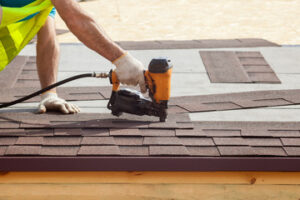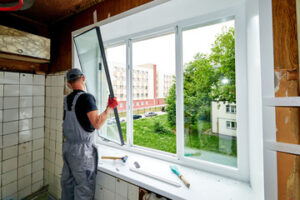General Contractor translates a project de, sig,n into a workable building. He or she orchestrates the comings and goings of workers, orders materials, and handles a variety of paperwork.
A skilled GC prioritizes open communication and realistic expectations. They understand the unique challenges of urban construction projects and can convey those realities to clients.

If you want to work as a general contractor, you will need to meet some licensing requirements. State licensing regulations vary by location, and can include passing an exam and proving you have the proper insurances and bonds to do your job.
Licensing requirements also differ between states and even cities, and some may require you to renew your license on a regular basis to ensure that you stay up-to-date with local and state requirements. You may also be required to take continuing education courses to keep your knowledge of the construction process current.
Many states require you to have a general contractor license before taking on any construction project. The threshold that determines whether you need a license depends on the value of the construction project and is set by each state’s licensing board. Some states also have different types of licenses for commercial and residential projects.
The licensing process can be time consuming and costly, and you will need to make sure that you stay up-to-date on any changes to local and state regulations. You will need to provide proof of insurance, including workers’ compensation and general liability, as well as a bond, which can cost anywhere from a few hundred dollars to upwards of $1,000.
Depending on the location, you may also need to register your business, get a tax ID number, and pay sales or use taxes. In New York, for example, you will need to obtain a permit from the Department of Taxation and Finance to operate your business. You may also need to obtain a health permit from the Department of Health and Mental Hygiene if you are taking on certain types of projects with the potential to impact the safety or health of the public.
In addition to meeting the licensing requirements, you will need to have excellent project management skills to effectively oversee a construction project. You will need to be able to plan and budget projects, manage multiple team members, and communicate with the client throughout the duration of the project. You will also need to be able to troubleshoot issues as they arise and find solutions quickly.
Building Your Reputation
In a business where you work closely with clients, relationships are paramount. When choosing a general contractor for a project, look for someone who you can get along with and who you feel comfortable trusting to work on your home or office. While a college degree in construction management or engineering is a bonus, it’s not necessary if they’ve got plenty of practical experience in the field.
While word-of-mouth and local advertising remain the best ways to promote a general contracting company, embracing digital marketing can amplify your reach and improve brand visibility. It’s important to understand your target audience so that you can tailor your marketing strategies and content. Identifying your core values and positioning yourself as a trusted source of information can also help you stand out from the competition.
Having a solid reputation as a general contractor is key to getting more work. You can make a name for yourself by taking on bigger projects, delivering on your promises, and providing excellent customer service. You can also get more business by joining industry organizations or networking with other contractors in your area. This can open up new opportunities for you to collaborate on projects and expand your network.
When it comes to choosing a general contractor, personal recommendations from friends and family are often valuable. However, it’s also worth considering their reputation, on-site behavior, and communication skills to ensure they are a good fit for your project. You’ll want to choose a detail-oriented person who places value on integrity and a job well done.
A general contractor is an ideal choice for large home or commercial renovation projects that require multiple subcontractors and permits. They have the licensing, training, and experience to navigate complex construction projects efficiently. They can offer better pricing than a DIY store, and their network of suppliers can provide high-quality materials for your remodel. A GC can also take care of scheduling, inspections, and other details that must be handled to meet regulatory standards.
Building a strong reputation as a general contractor takes time and effort, but it’s essential for your business. Follow these tips to get your career off the ground and start attracting more clients.
Getting Started
In the world of general contracting, having all your ducks in a row before taking on clients is essential. From ensuring that you have all your licensing requirements squared away to establishing competitive pricing and gaining new business, the list of to-dos for starting as a GC is extensive.
Getting started is easier than it may seem, however. First, research how obtaining a general contractor license works in your state. While the process varies across the country, aspiring GCs typically have to prepare for a trade exam and then complete any paperwork or other requirement related to obtaining their license.
Once you have your license, you can then begin looking for projects to bid on. This will require you to develop a network of industry contacts to help you find and secure work. Networking with fellow contractors at trade shows and conferences, participating in professional development events, and joining local construction management associations are all ways to build your industry insight and connections.
As you start to grow your business, hiring a team of workers will be necessary. This will take up a lot of your time and energy, but it’s important to hire people that can handle the pressures of the job. Inexperienced contractors can quickly burn through their resources and erode their reputation, so you want to make sure that you’re choosing the right people for your team.
It’s also important to stay on top of industry trends. New building technologies and sustainability practices are constantly being introduced, so if you’re not incorporating these into your work, you’ll be falling behind the competition. Continuing education courses, workshops, and seminars can help you keep up with these changes and implement them into your work.
Another important step is opening a business bank account to make it easier for you to receive payments from your clients and pay your hired crew. In addition, it’s a good idea to consider implementing a safety program in your business to improve performance and reduce risk. SafetyCulture makes it easy to manage programs, track employee safety, and ensure compliance with policies — all from one platform.








